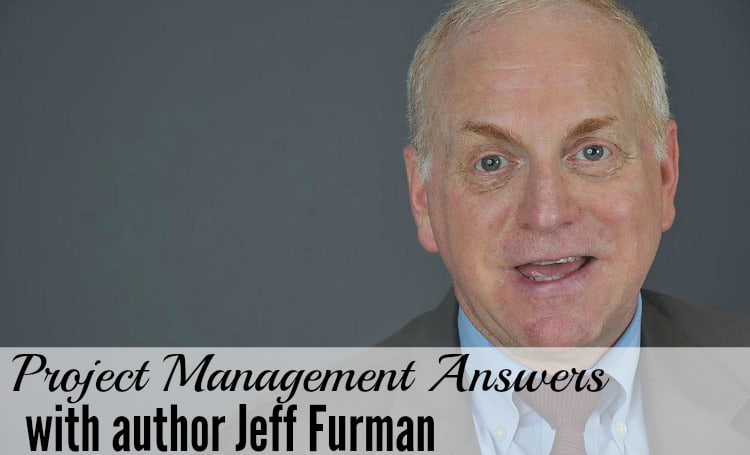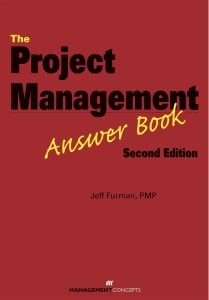Project Management Answers: Interview with author Jeff Furman
This blog is reader-supported. When you purchase something through an affiliate link on this site, I may earn some coffee money. Thanks! Learn more.

The
I caught up with him to find out more.
Jeff, why did you do another edition?
I realized that a second edition would be a great help to my readers and
- I wanted to update the entire 1st Edition to V5, covering every change to all affected processes, to best help my readers toward the
PMP andCAPM exams. - Since the book first came out in 2011, I’ve taught more than 50 project management classes using my book as a text. So I’ve come up with a lot of new
PMP test tips. And to and to make them easy-to-find, I put them all in “call-out boxes” throughout the book. It feels great adding all these tips into the second edition! - Scrum has been catching fire the last few years, so to help my readers, I’ve added a robust new “Intro To Scrum” chapter. This will give readers an exposure to
Agile , and also will help them on job interviews (where hiring managers are NOT bound to ask “Waterfall only” questions!). My chapter also provides info aboutAgile certifications that project managers might want to pursue to boost their resume.
Great. So let’s pick up on your first point? What’s changed in the
One big change is that many process names have been improved for clarity. And some new processes have been added which finally “give a home” to several project artifacts where it had been a bit of a mystery where they were supposed to be created.
But the most significant change is that after many years of the famous nine PMI Knowledge Areas, PMI has now added a tenth knowledge area: Project Stakeholder Management.
Why did they do that? Tell me why you think stakeholder management so important.
Everyone agrees that customer satisfaction is key to project success. But many project managers and teams treat customer satisfaction kind of passively, e.g. “They’ll see what a good job we did for them, and they’ll appreciate it.”
The new Stakeholder Management knowledge area helps project managers shoot for customer satisfaction proactively, just like going for high quality, or fast delivery. And also, with an emphasis on strategizing and planning for stakeholder engagement (beyond just stakeholder management).
To that end, I provide templates in my book for two new PMI-recommended tools: the Power and Interest Grid, and the Stakeholder Engagement Assessment Matrix.
What did you learn as an author from preparing the second edition?
Writing a second edition was like being in “Groundhog Day Heaven!” From the vantage point of learning a lot of new best practices over the past few years, it was very satisfying to take each chapter from the first edition and “spike it up,” while also adding three new chapters.
But while adding in the new material, I also had the challenge of trying to keep the length close to that of the first edition. So I learned the discipline of going through my first book and cutting every three paragraphs down to two wherever possible, without losing any key content (not easy!).
That sounds like a challenge. On my books, I’ve always found it useful to have the extended team around me as it’s a collaborative effort. Did you find that too?
Yes. For example, two students in my recent
Thanks again to both for granting permission.
Some of your students are in the Army, aren’t they? What is it like working with them?
When I teach Army project managers, they often are exceptionally eager to learn. And so what often happens when I present a concept is it triggers one of the soldiers to share a related idea from their military training.
I then wind up using these pairs of similar (PMI vs. Army) terms in my next Army classes, because they help me get the points across faster. And I even use them sometimes in all-civilian classes, because civilians appreciate the analogies also. A couple of quick examples would be:
| PMI Term | Army Term |
| Scope Creep | “Mission Creep” |
| Lessons Learned | AAR (After-Action Review) |
Thanks, Jeff. How can we get hold of a copy of The Project Management Answer Book?
You can get it from Amazon (paperback and Kindle). Or direct from the publisher, Management Concepts Press.
If you are in New York, pop into the NYU Bookstore in Manhattan, 726 Broadway, in Greenwich Village, near the corner of Broadway & Waverly Place.
Well, if I’m ever passing, I’ll go in and see it on the shelf! Thanks very much Jeff.
About Jeff: Jeff Furman,
Photo credit: Michelle Wild.

